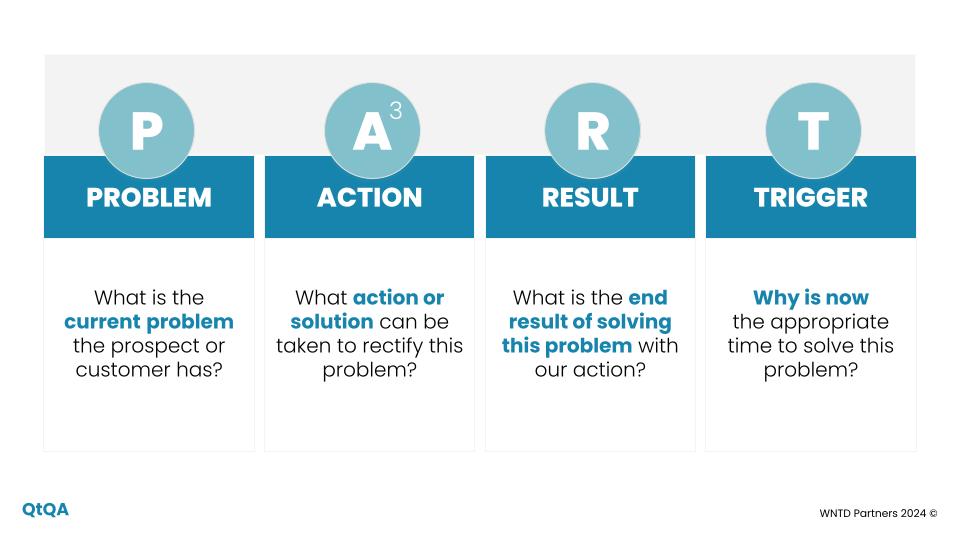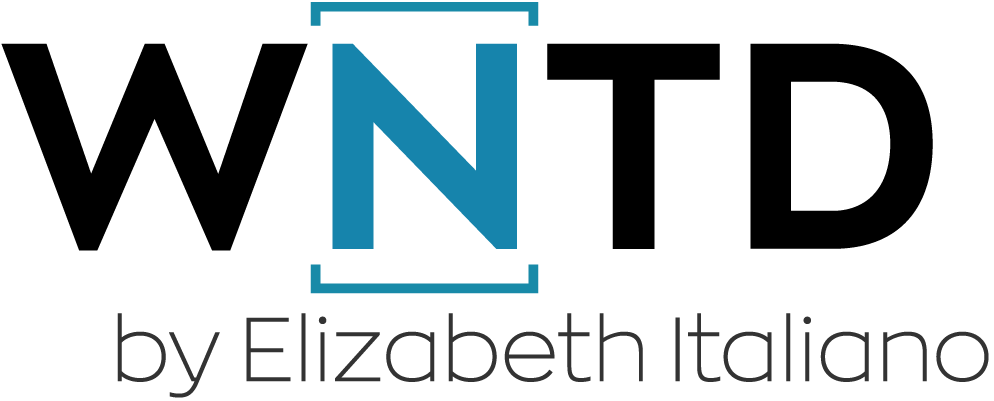I have written quite extensively about our PART framework lately and how to leverage it for sales and customer success. In a recent conversation, I confided to a colleague of mine with a strong background in marketing and content development that content writing is quite an exhausting endeavor for me. I have lots of experience and lots of stories in my head, yet often I sit in front of a blank screen trying to figure out how to get started. How do I convey what is in my mind in a concise and meaningful way, in a written form, without overcomplicating things?
Interestingly, the answer was always much closer to me than I realized. When we started discussing and structuring my writing, what jumped out at me was that I should just take a page out of my own book and employ the same PART framework I have been evangelizing to sales and customer success. What I realized is that the PART framework is so simple, powerful, yet common sense, that its use may be applicable across more than just two disciplines, especially since in B2B space the entire revenue cycle is so very tightly interconnected.
Marketing content aims to captivate the audience, convey value, and drive action. One powerful method to achieve these goals is by using the PART framework—Problem, Action, Results, Trigger. This structured approach ensures your content resonates with the audience, clearly communicates the benefits, and prompts the desired action.

Here’s how I started leveraging the PART framework in my marketing content and the approach I would recommend if your are just starting out:
Problem: Identify the Pain Point
Start by identifying the problem your audience faces. This sets the stage and immediately captures attention by addressing a common pain point or challenge.
Example:
- Problem: “Many small business owners struggle with managing their finances efficiently, leading to cash flow issues and financial stress.”
Action: Propose a Solution
Next, present the action—what can be done to solve this problem? This is where you introduce your product or service as the solution.
Example:
- Action: “Our financial management software provides the ability to simplify expense tracking, budgeting, and reporting.”
Results: Highlight the Benefits
Clearly outline the results or benefits of taking the proposed action. This step is crucial as it demonstrates the value and effectiveness of your solution.
Example:
- Results: “By integrating expense tracking, budgeting, and reporting, business owners can reduce financial errors by 30%, improve cash flow management, and save up to 10 hours a week on accounting tasks.”
Trigger: Create a Sense of Urgency
Finally, include a trigger to prompt immediate action. This could be a limited-time offer, a compelling call-to-action, delivery of a key result, or highlighting the consequences of not addressing the problem.
Example:
- Trigger: “Don’t let financial stress hold your business back. Sign up today for a free 30-day trial and reduce your risk of lost profits.”
Putting It All Together
When combined, the PART framework ensures your marketing content is compelling, clear, and action-oriented. Here’s how it looks in a complete piece of content:
Are Financial Woes Holding Your Business Back?
Many small business owners struggle with managing their finances efficiently, leading to cash flow issues and financial stress. Our financial management software offers the ability to simplify expense tracking, budgeting, and reporting. By using our software, business owners can reduce financial errors by 30%, improve cash flow management, and save up to 10 hours a week on accounting tasks. Don’t let financial stress hold your business back. Sign up today for a free 30-day trial and take the first step towards financial peace of mind and recapture lost profit.
Expanding and Perfecting the Approach
While the above example may sound very clinical and simple (after all, it is just one paragraph!), it is really the approach that matters. Think about this being just a basic structure on which you can further build. For example, if writing an article or whitepaper, you could expand the ‘Problem’ section to provide more historical context if necessary or ‘Action’ section to provide examples of past solution attempts that didn’t work out. The beauty of this approach is that it also works across multiple mediums: from written articles, through presentation decks or recorded videos – it is all about structuring your story:
- Problem: Identify the Problems, Pain Point and Challenges (+ add any relevant context)
- Action: Propose a Solution (+ add any previously failed action if relevant)
- Results: Highlight the Benefits and Outcomes (+ why you or your solution is different)
- Trigger: Create a Sense of Urgency (+ what is the cost of inaction (COI))
Benefits of Using the PART Framework
It is very natural that when we are writing something we get entangled in a lot of content and the main point we want to get across gets lost in the lengthy or convoluted copy. We are so close to it, yet feel we need to add more explanation than necessary which further complicates the story for the reader. The PART framework will help break through those issues, by helping drive:
- Clarity: Clearly outlines the problem and solution, making it easy for the audience to understand the value proposition
- Engagement: Addresses the audience’s pain points, keeping them engaged and interested in the content
- Action-Oriented: Ends with a strong call-to-action, increasing the likelihood of the audience taking the desired step
Conclusion
The PART framework is a powerful tool for creating marketing content that resonates with your audience and drives action. By focusing on the problem, proposing a clear action, highlighting the results, and creating a trigger, you can craft compelling messages that convert.
Incorporate the PART framework into your marketing strategy and watch your engagement and conversion rates soar. Happy marketing!
For more help with crafting messages that resonate and other revenue topics, you may enjoy our Quest to Quota Attainment Course which is broken up into short modules making it easy to learn and practice new skills in short but effective time blocks each day. If you’d like to catch all of our revenue-generating tips sign up for our newsletter and subscribe to our YouTube Channel.
And finally, if you need hands-on support for your revenue-generation efforts, check out the services we offer.




